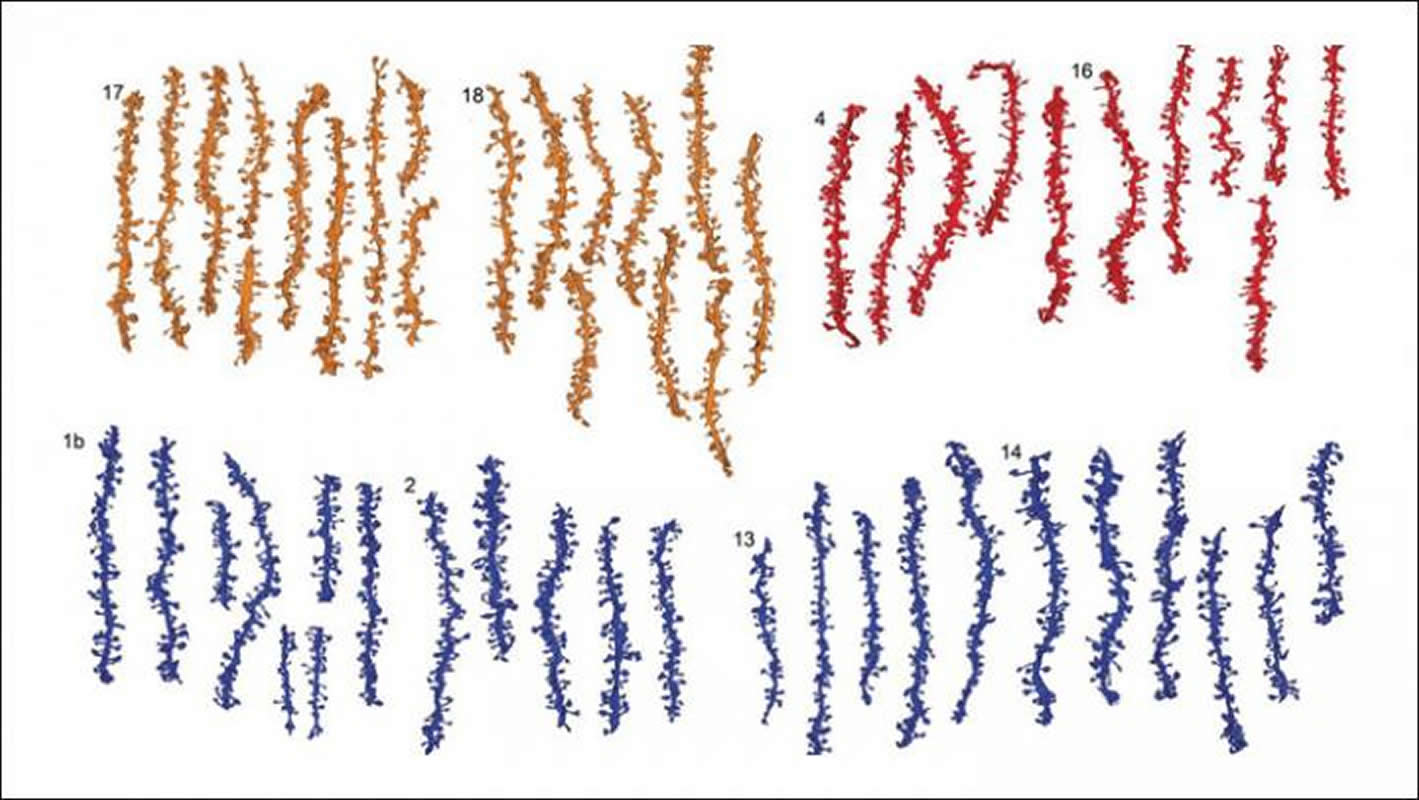Summary: Hippocampal neurons become longer and stronger following a period of sleep deprivation. The study supports the hypothesis that sleep may weaken synapses, which are strengthened from learning, allowing for learning to occur after waking.
Source: SfN
Synapses in the hippocampus are larger and stronger after sleep deprivation, according to new research in mice published in Journal of Neuroscience. Overall, this study supports the idea that sleep may universally weaken synapses that are strengthened from learning, allowing for new learning to occur after waking.
Sleep is thought to recalibrate synaptic strength after a day of learning, allowing for new learning to take place the next day. Chiara Cirelli and colleagues at the University of Wisconsin-Madison examined how synapses in the hippocampus, a structure involved in learning, changed following sleep and sleep deprivation in mice.
Consistent with previous studies in the cortex, the researchers observed that synapses were larger, and therefore stronger after the mice were awake for six to seven hours compared to after they were asleep for the same amount of time. Additionally, the researchers found that the synapses were strongest when the mice were forced to stay awake and interact with new stimuli, compared to mice that stayed awake on their own. This is consistent with the hippocampus’ role in learning and suggests that synaptic changes take place when learning occurs, not merely from being awake.

Source:
SfN
Media Contacts:
Calli McMurray – SfN
Image Source:
The image is credited to Spano et al., JNeurosci 2019.
Original Research: Closed access
“Sleep Deprivation by Exposure to Novel Objects Increases Synapse Density and Axon-Spine Interface in the Hippocampal CA1 Region of Adolescent Mice”. Giovanna Maria Spano, Sebastian Weyn Banningh, William Marshall, Luisa de Vivo, Michele Bellesi, Sophia S Loschky, Giulio Tononi and Chiara Cirelli.
Journal of Neuroscience. doi:10.1523/JNEUROSCI.0380-19.2019
Abstract
Sleep Deprivation by Exposure to Novel Objects Increases Synapse Density and Axon-Spine Interface in the Hippocampal CA1 Region of Adolescent Mice
Sleep has been hypothesized to rebalance overall synaptic strength after ongoing learning during waking leads to net synaptic potentiation. If so, since synaptic strength and size are correlated, synapses on average should be larger after wake and smaller after sleep. This prediction was recently confirmed in mouse cerebral cortex using serial block-face electron microscopy (SBEM). However, whether these findings extend to other brain regions is unknown. Moreover, sleep deprivation by gentle handling was reported to produce hippocampal spine loss, raising the question of whether synapse size and number are differentially affected by sleep and waking. Here we applied SBEM to measure axon-spine interface (ASI) – the contact area between pre-synapse and post-synapse — and synapse density in CA1 stratum radiatum. Adolescent YFP-H mice were studied after 6-8h of sleep (S=6), spontaneous wake at night (W=4) or wake enforced during the day by novelty exposure (EW=4; males/females balanced). In each animal ≥425 ASIs were measured and synaptic vesicles were counted in ∼100 synapses/mouse. Reconstructed dendrites included many small, nonperforated synapses and fewer large, perforated synapses. Relative to S, ASI sizes in perforated synapses shifted towards higher values after W and more so after EW. ASI sizes in nonperforated synapses grew after EW relative to S and W, and so did their density. ASI size correlated with presynaptic vesicle number but the proportion of readily available vesicles decreased after EW, suggesting presynaptic fatigue. Thus, CA1 synapses undergo changes consistent with sleep-dependent synaptic renormalization and their number increases after extended wake.
SIGNIFICANCE STATEMENT
Sleep benefits learning, memory consolidation, and the integration of new with old memories, but the underlying mechanisms remain highly debated. One hypothesis suggests that sleep’s cognitive benefits stem from its ability to renormalize total synaptic strength, after ongoing learning during wake leads to net synaptic potentiation. Supporting evidence for this hypothesis mainly comes from the cerebral cortex, including the observation that cortical synapses are larger after wake and smaller after sleep. Using serial electron microscopy, we find here that sleep/wake synaptic changes consistent with sleep-dependent synaptic renormalization also occur in the CA1 region. Thus, the role of sleep in maintaining synaptic homeostasis may extend to the hippocampus, a key area for learning and synaptic plasticity.






